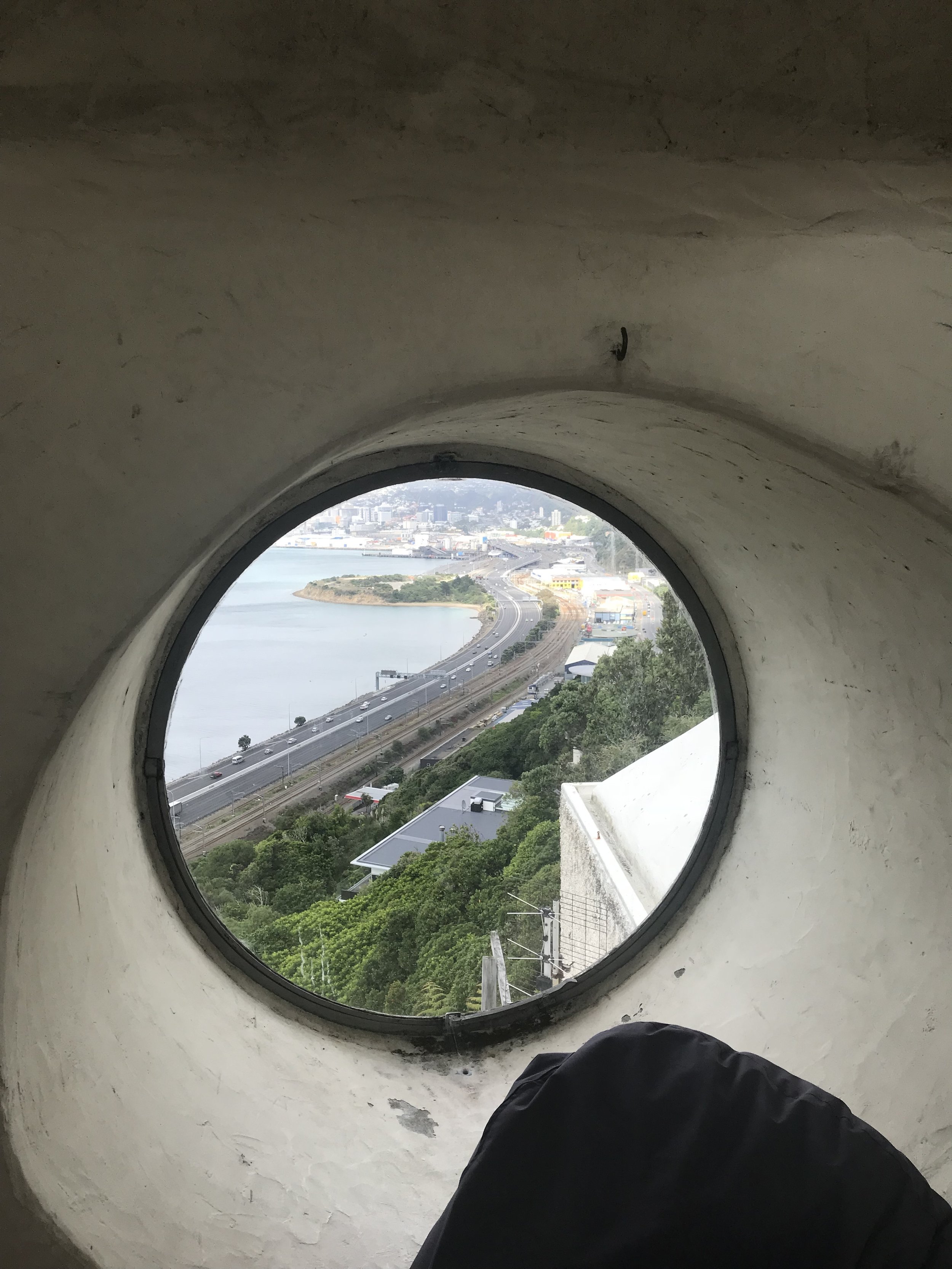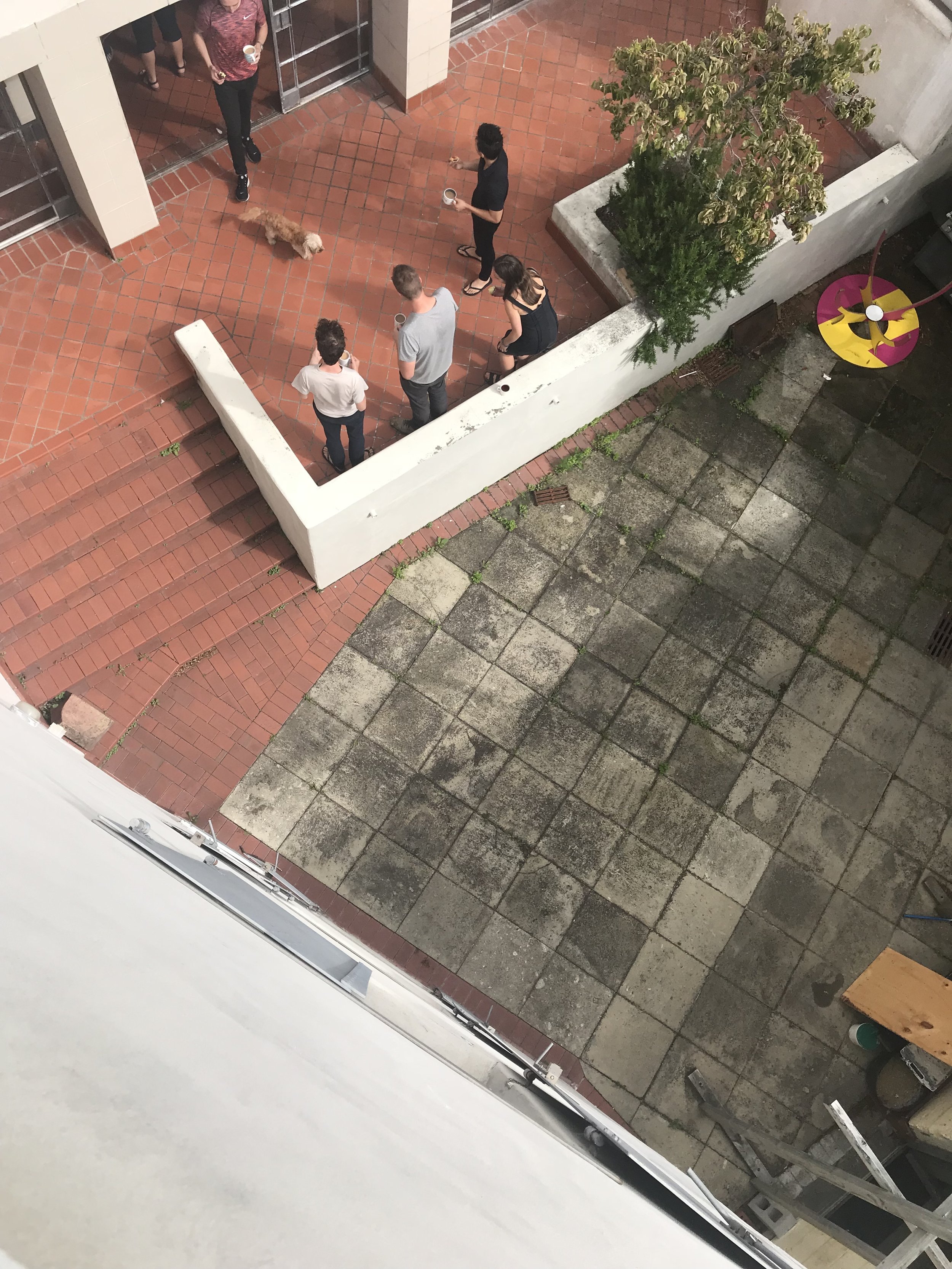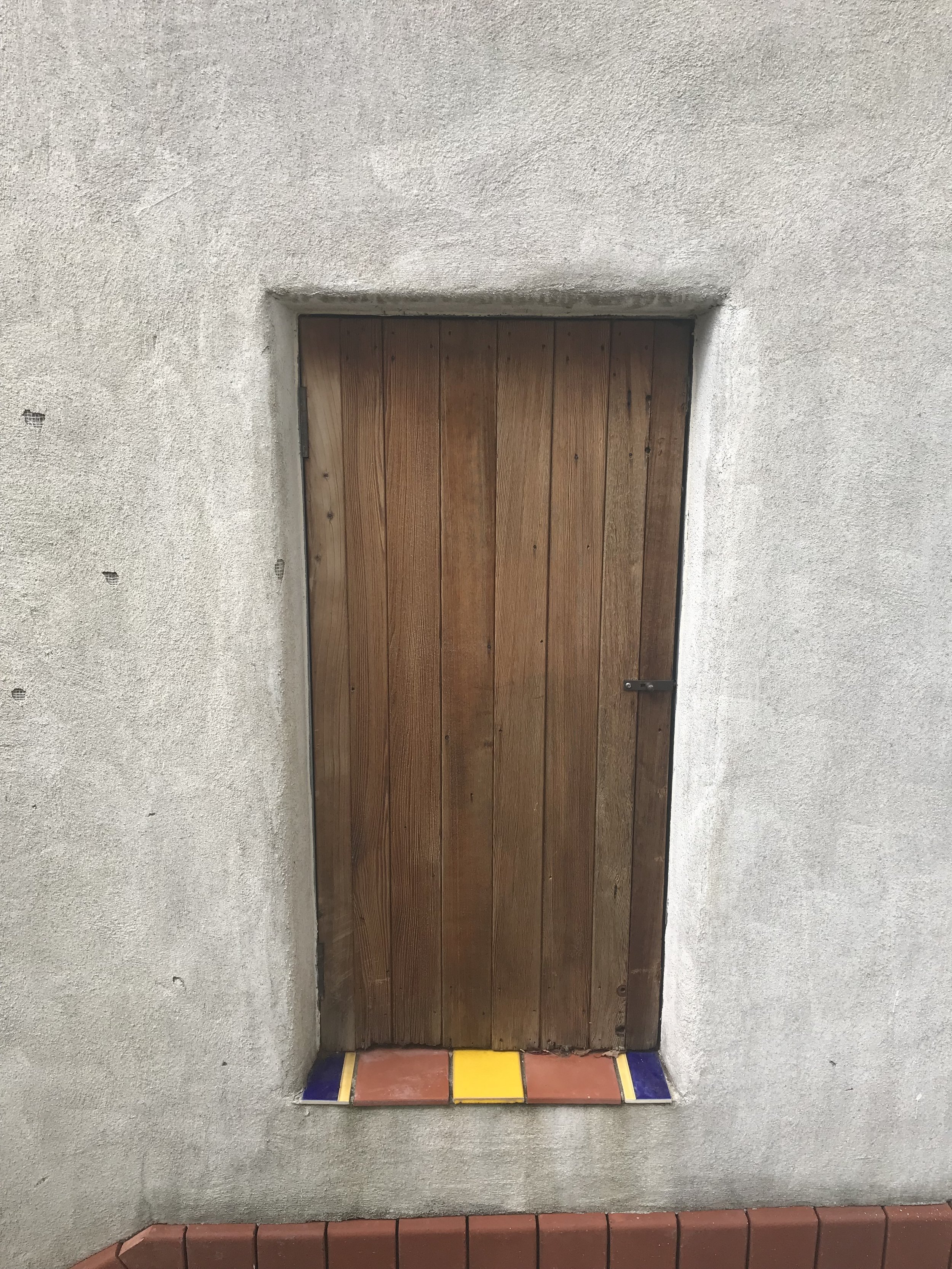Rebel with a cause: the legacy of architect, Ian Athfield
At nearly 50 years old, Ian Athfield’s iconic Wellington complex of terraced dwellings and offices continues bravely to evolve
Athfield Home and Office was added to Heritage New Zealand’s Category 1 list in 2018 as a place of outstanding and special significance (image by Jacqui Gibson).
Views over Wellington harbour from Athfield House and Office in Khandallah (image by Jacqui Gibson).
It's hard to imagine another suburban house in New Zealand that more brazenly thumbs its nose at the quarter-acre dream.
For sure, it’s a problematic aspiration these days, given the current state of housing affordability. But back when the first clod of Athfield House and Office was turned, the conventional family home was very much the desire of most middle-class Kiwis.
And that’s exactly what the property’s creator, architect Ian Athfield, wanted to poke a stick at.
The then-28-year-old husband and father wanted to take hold of the typical New Zealand family home and turn it on its head.
Instead of wood, he’d build it from concrete and gleaming white plaster. Instead of shaping it to suit the needs of the single familial unit, he’d design it to house anyone eager to live and work together in a kind of social experiment.
It would start as a family home, but would soon morph into an interconnected network of separate dwellings, private alleyways, sheltered courtyards, office spaces, recreational areas and even a rooftop pool. He’d construct it atop a hill as proud and as precipitously placed as any Mediterranean castle.
And he’d furnish it with radical features such as a round look-out tower and porthole windows to make the most of the site’s expansive city and harbour views.
Then, as a final footnote, he would ditch any kind of boundary fence in favour of infinite space to allow the suburban structure to evolve and grow continuously, as author and photographer Simon Devitt once wrote, “as lava leaks from a volcano”.
Sited on a steep Khandallah hillside in Wellington for nearly 50 years now, Athfield House and Office, does, in fact, look as if it’s cascading down the bank from Amritsar Street to Onslow Road.
Heritage New Zealand Central Region Conservation Architect Alison Dangerfield has made several visits to Athfield House and Office, a 10-minute drive from Wellington’s CBD, over the past few years.
“We know Sir Ian and Lady Clare chose the elevated site thinking it would grab people’s attention. And certainly, with the addition of the home’s bulbous white tower in 1971, the property did become a conspicuous presence on the Wellington landscape,” she says.
“But it’s really so much more than that today. Today it joins the likes of St Gerard’s Monastery and the Beehive as one of the city’s most celebrated buildings: a symbol of not only Sir Ian and Lady Clare’s identities, but that of the city as well.”
The portholes of Athfield House and Office, Wellington (image by Jacqui Gibson).
Alison was one of three authors of the 2017 listing report for Athfield House and Office, the ever-growing complex of terraced dwellings and offices that act as either homes or offices or both to approximately 65 people.
The property is one of more than several hundred buildings that make up the Athfield body of work, which started with Athfield House in 1965 and went on to include dozens of residential homes, as well as major commercial and public projects such as Wellington’s Civic Square and waterfront.
Before his death in 2015, aged 74, ‘Ath’ as he was known to family and friends, was considered one of the country’s most outstanding and celebrated architects of the late 20th and early 21st centuries.
In 1976, having practised architecture for less than a decade, he took first prize in an international competition for his approach to low-cost housing in the Philippines. By 2014, with a slew of accolades under his belt, he’d picked up a knighthood for services to architecture.
Alison says: “It’s a career that started right here in Khandallah with this pivotal building. In Sir Ian’s work, we see the development of a unique approach to domestic architecture within New Zealand. It signals a time of transition between modernism and the Colonial Revival era of the 1970s. It also provides a link between the colonial period and the late-20th-century urbanism rarely seen elsewhere. It’s a property I’m confident will become more and more significant with time.”
In Athfield House and Office, she says, visitors are given a glimpse into its author’s rebellion against the social isolation and individualism of the suburbs.
“He very much believed in communal living - in the mini city or village - where work and home were intrinsically linked. The Titanic Tearoom, for example, is the central congregating place for workplace conversation and refreshments. In contrast, Cliffside is a three-level apartment just four minutes’ walk away through a double door.”
Athfield House and Office was added to Heritage New Zealand’s Category 1 list as a place of outstanding and special significance in January this year.
Zac Athfield, son of the late Sir Ian Athfield and principal at the firm his father set up, says its a privilege to work on site every day and continue his father’s work.
“Obviously, I have a long association with this place. First, as a child growing up here. I have plenty of memories of sitting in the tower, peering out the portholes and ducking in and out of the small spaces he created, just like my kids do now.
“Mum and Dad’s parties were legendary, of course. And it’s hard to imagine this now, but Dad’s belief in the ability to work from home was itself another innovation of its time.
“I think the biggest challenge for the practice, as we continue to acquire land and change and evolve the spaces, is to think about what’s next. What new materials do we want to apply and where? In my experience, that’s how this building works - as an ongoing project that’s in a constant state of semi-completion and renewal. It’s a building that will forever have its purpose defined by the energy and endeavour of the people who live and work here.”
This story was first published in Heritage New Zealand magazine.
Outdoor stairway of Athfield House and Office, Wellington (image by Jacqui Gibson).








